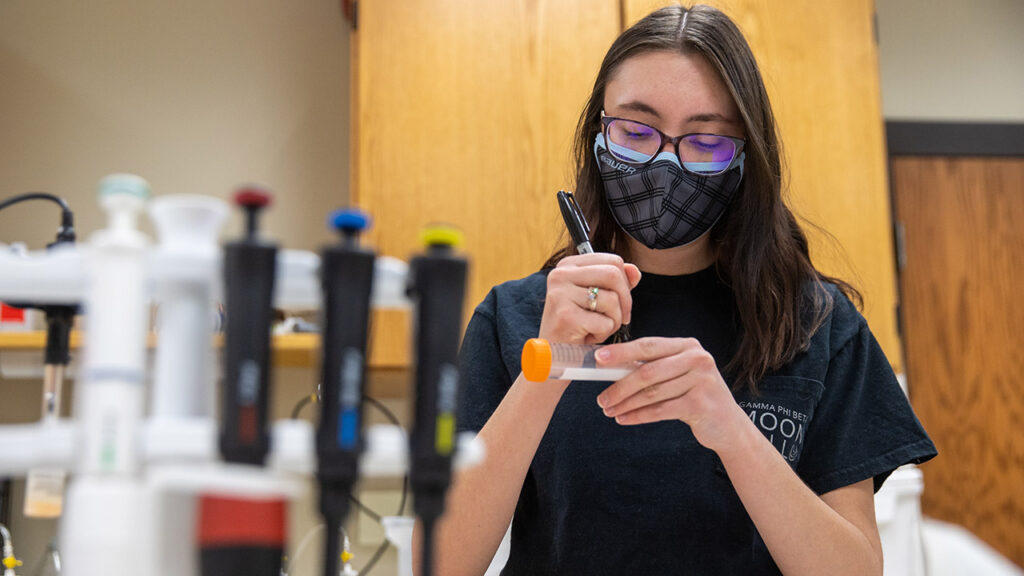
Phosphorous concentrations are at an almost dangerously high level in Wisconsin, says University of Wisconsin-Platteville senior Olivia Kozlowska – an environmental engineering major from Chicago, Illinois – and it’s a problem she hopes her research will address. Kozlowska will present her project, “Evaluation of Filter Media for Phosphorous Removal Systems” at next month’s annual Research in the Rotunda event at the Capitol in Madison, Wisconsin.
When phosphorous concentrations are high in run-off and soil, it makes its way to streams, rivers, lakes and groundwater. This causes an increased growth in aquatic plants and algae – like the toxic blue-green algae, for example, that typically invades Wisconsin lakes in the summer. Kozlowska and her fellow student researchers have been investigating the use of biochar as a phosphorous absorption solution. Biochar is a charcoal-like substance produced by heating up plant materials without oxygen. It’s already frequently used within agriculture and known to bring benefits of healthier, more fertile soil and improved water retention.
Kozlowska has been making biochar from different media types, such as pine shavings and corn stover, to determine which media is most effective at phosphorous uptake.
“We take whatever media we are using and we put it in an oven without oxygen, and we leave it in the oven at a particular temperature for a particular amount of time, depending on the media,” said Kozlowska. “Essentially, what we get are biochar pellets, and we then grind those up. Once we figure out what biochar has the best capacity, we will be incorporating that into edge of field practices, which will then uptake more phosphorus and leave less phosphorus in run-off. This will ensure that run-off and surface water is healthier.”
To determine this, Kozlowska said the next step of the research will be testing the biochar samples. The team will use PVC columns packed with soil and biochar samples. They will simulate edge of field run-off by pumping a phosphorus solution up through the columns, collecting samples, and analyzing to see which media in which column absorbed the most phosphorus.
Kozlowska has worked on this project with Dr. Joseph Sanford, assistant professor in UW-Platteville’s School of Agriculture and faculty researcher for Wisconsin’s Dairy Innovation Hub, for more than a year.
“I’ve been working on this project for a long time, and it has become really important to me, so I hope that we can implement our findings in the real-world,” said Kozlowska, who will have an opportunity to present the findings to the public, legislators and other state leaders at the Research in the Rotunda event on March 9. “I hope that leaders can see how important this is and what kind of difference it does make in run-off water and the health of farms.”
For more information on Research in the Rotunda, visit /www.wisconsin.edu/research-in-the-rotunda/.
